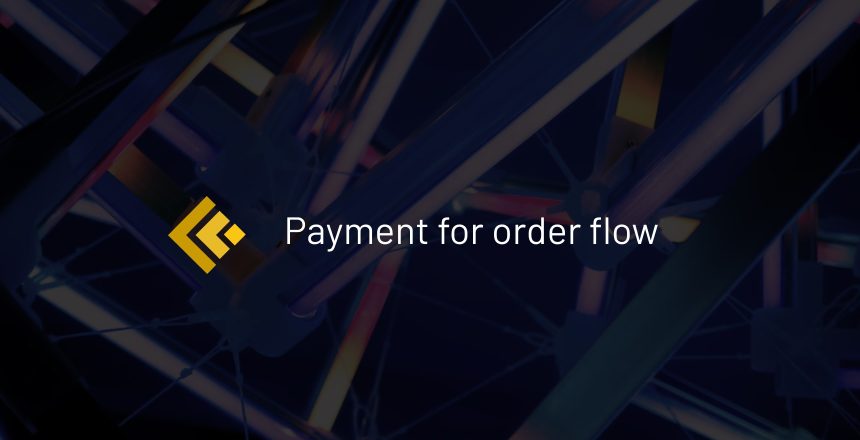“Payment for order flow” is a term that has been frequently used over the past year. In this article we will explain what it means, the parties involved, how they benefit from it, and more.
What is Payment for Order Flow (PFOF)?
Payment for order flow is the payment a brokerage firm (like Robinhood or Fidelity) receives in exchange for routing a transaction through a particular market maker. This means that a market maker could pay the brokerage firm a tiny amount for each option or stock order that is routed through them.
For example, you place an order to buy an option contract of AAPL on Robinhood. In order for Robinhood to fulfil the order, they route the transaction to a market maker and receive a payment in exchange.
Who benefits?
Payment for order flow benefits the brokerage firms and the market makers. Brokerage firms benefit from PFOF as a revenue generator for the company. In 2020, four large brokerage institutions received $2.5 billion in revenue from PFOF. This makes PFOF one of the largest revenue drivers for brokerages and one of the ways they can offer “no commission trading”.
Market makers profit from payment for order flow depending on the bid-ask spread of a security. The bid-ask spread for options is typically wider than for equities and therefore, PFOF is higher. For example, if you place an order to buy 1 share of Microsoft, the bid price is $288.54 and the ask price is $288.92. The range of profit for the market maker is the “spread” which in this example is $0.38. In exchange for routing this trade through a particular market maker, the market maker would pay the brokerage part of the profit, likely a few cents.
The consolidated real-time market data for MSFT across all US stock exchanges is:
| Last sale (XNAS) | $289.10 x 3,610.354 |
| Bid (XNAS) | $288.54 x 3 |
| Ask (ARCX) | $288.92 x 3 |
Controversy
The controversy around payment for order flow revolves around misaligned interests between the brokerage firm and the customer. The brokerage firm aims to maximize revenue and will often choose the market maker that offers the highest payment for routing a customer’s trade. However, it’s in the customer’s best interest to receive a fill for their order at the best price. The problem is that the market maker offering the brokerage firm the most profit can sometimes be different from the market maker that offers the best price for the customer’s trade.
Although PFOF has received a lot of controversy, it’s worth noting that there have been more market makers in the past decade which increases competition between them. This lowers the spread and results in better order fill for the consumer.
Recent News
PFOF has been frequently in the news over the past year partially because the increased revenue brokerages have generated. As more consumers started trading and investing, in 2020 alone, four large brokerages received $2.5 billion in revenue from PFOF. This is nearly triple the profit from PFOF in 2019.
Furthermore, one brokerage called Public decided to end their PFOF practices to better serve their customers. They have introduced new features like “tipping” in order to create a new source of revenue that will offset the removal of PFOF.
Conclusion
Payment for Order Flow is a way for brokerage firms to profit by routing transactions through a particular market maker. We covered a few areas:
- Brokerage firms and market makers benefit from PFOF
- Controversy around PFOF is centered around misaligned interests of the brokerage firm and consumer
- PFOF has been a leading revenue generator for brokerages during the pandemic, with some brokerages taking a stance against it





